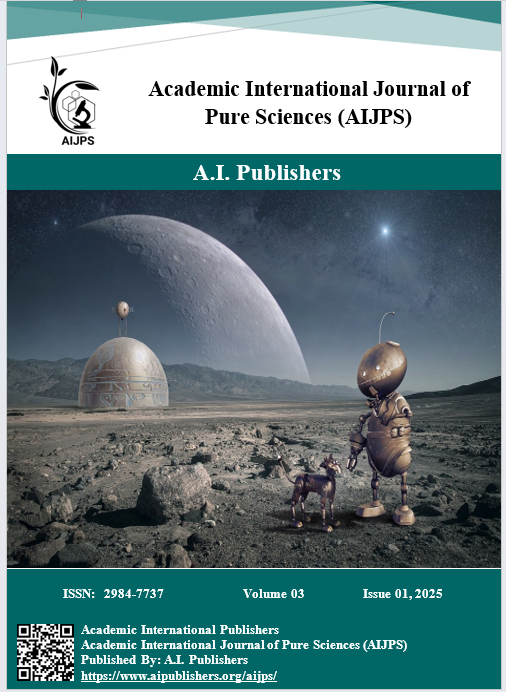The effect of Capparis spinosa extract on some immunological and physiological variables of mice
DOI:
https://doi.org/10.59675/P224Keywords:
Capparis spinosa, Caper plant extract, Soxhlet extraction, Ethanol extraction, Physiological effects, Haemoglobin (Hb)Abstract
Background The pungent taste and numerous health advantages of the caper plant are not to be overlooked. Thanks to its high vitamin content—including B12, niacin, vitamin K, vitamin A, vitamin E, and fiber—it finds widespread usage as both a culinary seasoning and a medicinal herb. Methodology The Soxhlet device was the most efficient and effective way to isolate the plant's active organic ingredient crude. I ground the plant into a powder using a blender. Then, I added 250 mL of ethanol and added 95% after extraction. I extracted the plant within 24 hours and concentrated the mixture using a rotary evaporator. Finally, I frozen it at -20 ° until I needed it. The mice were housed in sanitary cages that met their nutritional, thermal, and ventilation needs. The experiment did not begin until the mice had been allowed to acclimate for one week without treatment. Result The results presented here appear to be descriptive statistics for a number of physiological characteristics measured in mice treated with varying concentrations of Capparis spinosa extract (control, 10%, and 20%). Haemoglobin (Hb), packed cell volume (PCV), red blood cell count (RBC), white blood cell count (WBC), and the total count for each therapy group are the variables that are being considered. In order to compare the control group with the groups treated with varying doses of Capparis spinosa extract, this data sheds light on the central tendency and variability of physiological variables under different treatments. The results showed an increase in some blood variables compared to the control. There is also an increase in the number of white blood cells, which enhances the increase in the first line of defense against pathogenic organisms.
References
ALGAHDALI, Elham H.; MAHASSNI, Sawsan H. The aqueous extract of Leptadenia pyrotechnica Decne enhances the innate immune response and inhibits the acquired immune response, while the aqueous extract of Capparis cartilaginea Decne does the exact opposite in Healthy Rats. Journal of Ayurvedic and Herbal Medicine, 2023, 9.2: 66-88.
YANG, Tao, et al. The protective effect of Capparis spinosa fruit on triptolide-induced acute liver injury: A metabolomics-based systematic study. Journal of Functional Foods, 2022, 90: 104989.
CELEPLI, Salih, et al. The effects of Capparis ovata seed oil on the healing of traumatic skin wounds. Turkish Journal of Trauma & Emergency Surgery/Ulusal Travma ve Acil Cerrahi Dergisi, 2022, 28.9.
HOSAWI, Maram Bakr. Flavonoids of Capparis Cartilaginea Fruit Extract Effect on Wound Healing in Human Prostate Cancer Cell Line. 2020. PhD Thesis. KING ABDULAZIZ UNIVERSITY JEDDAH.
NOUR EL IMÉNE, Boublata, et al. Undesired Effects of Bioinsecticides Molecules in Wistar Rats: Case of Spirotetramat, Citrulus Colocynthis and Cleome Arabica Extracts. Journal of Bioresource Management, 2021, 8.4: 2.
AYZA, Muluken Altaye, et al. Potential protective effects of antioxidants against cyclophosphamide-induced nephrotoxicity. International Journal of Nephrology, 2022, 2022.
FARAG, Mayada R., et al. Quercetin alleviates the immunotoxic impact mediated by oxidative stress and inflammation induced by doxorubicin exposure in rats. Antioxidants, 2021, 10.12: 1906.
GADHOUMI, Hamza, et al. Biochemical Composition, Antioxidant Capacity and Protective Effects of Three Fermented Plants Beverages on Hepatotoxicity and Nephrotoxicity Induced by Carbon Tetrachloride in Mice. Indian Journal of Microbiology, 2023, 1-15.
ESKANDRANI, Areej, et al. The potent synergistic effect of Brassica oleracea against congenital Toxoplasma infection in rat model. Food Bioscience, 2023, 55: 103059.
NOURBAKHSH, Fahimeh, et al. A promising impact of oral administration of noscapine against imiquimod-induced psoriasis-like skin lesions. Avicenna Journal of Phytomedicine, 2023, 13.4: 412.
SUN, Wenli; SHAHRAJABIAN, Mohamad Hesam. Therapeutic potential of phenolic compounds in medicinal plants—Natural health products for human health. Molecules, 2023, 28.4: 1845.
MUSA, Farkad Hawas, et al. Effect of some plant extracts on the Pyocyanin Production from Pseudomonas Aeruginosa which Isolated from clinical samples. In: IOP Conference Series: Materials Science and Engineering. IOP Publishing, 2020. p. 012041.
HUSSEIN, Najeeb Mohammed, et al. ISOLATION AND DIAGNOSIS OF BACTERIA CAUSING URINARY TRACT INFECTION IN CHILDREN. Systematic Reviews in Pharmacy, 2020, 11.1.
ABD SHARAD, Ali; ALMUHARIB, Omar; HUSSEIN, Najeeb Mohammed. Effect of Xanthium strumarium extract on some virulence factor of Proteus mirabilis isolated from patients in Ramadi Hospital. Systematic Reviews in Pharmacy, 2020, 11.9: 1122-1124.
FAYYADH, Mohammed Amer, et al. Molecular Study Using Real Time PCR to Detect Influenza Viruses (Flu A, Flu B and RSV) in Patients at Ramadi Hospital. Indian Journal of Forensic Medicine & Toxicology, 2022, 16.2.

Downloads
Published
Issue
Section
License
Copyright (c) 2024 Academic International Journal of Pure Science

This work is licensed under a Creative Commons Attribution 4.0 International License.





